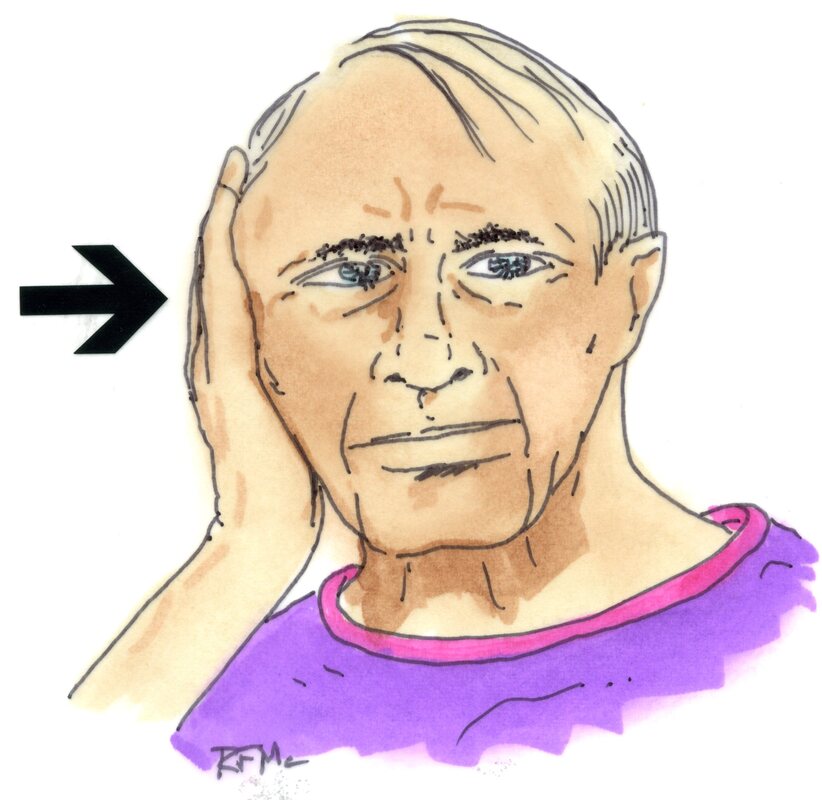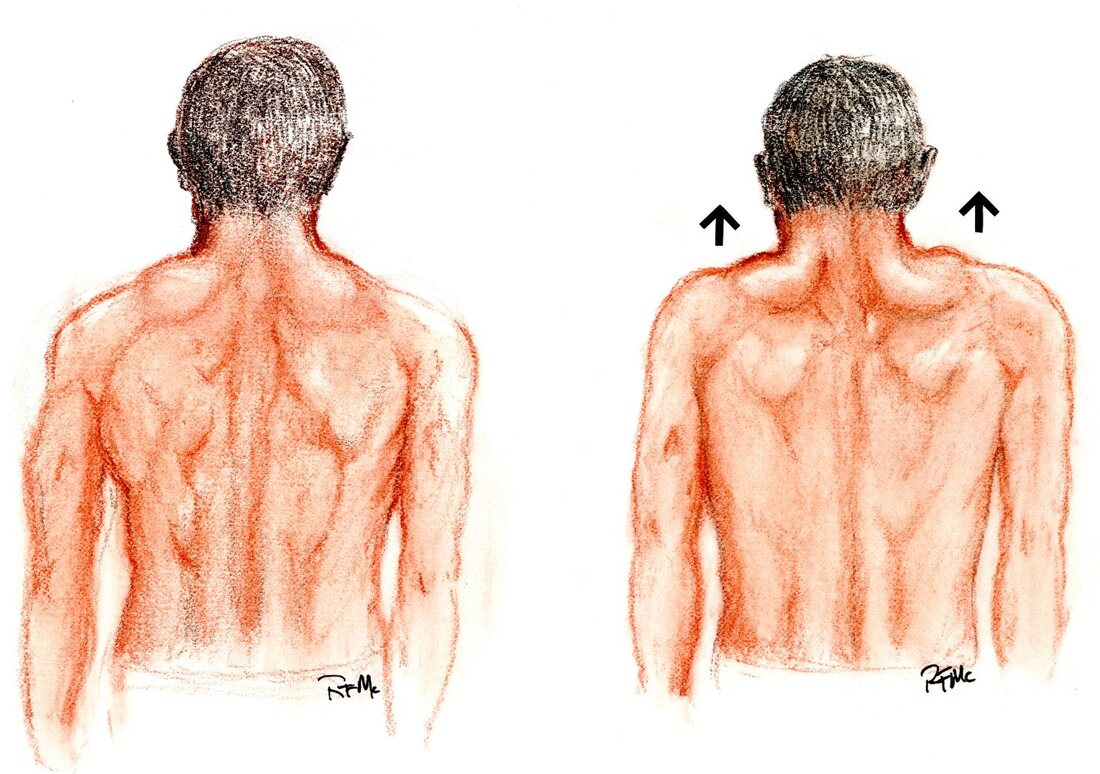Cervical Spine Exercises for preop and post-op patients alike Any and every patient that comes through my clinic for neck pain or radiculopathy will have some need for an exercise and neck fitness program, if not to avoid cervical spine surgery then to recover from it. It’s universally recognized that an exercise program can reduce neck pain and spasm after an injury as well as surgery can, in most cases, and that after months of pain and limited activity the muscles that support our head and neck weaken and become very susceptible to repeated aggravation and reinjury. So, a good exercise program is IMPORTANT whether you are avoiding surgery or recovering from it! Stretching exercises: It’s usually not necessary to work hard on stretching the neck to regain motion. After an injury or after a bout of muscle spasm, most patients can regain range of motion by working very gently on 3 types of stretching activities: Gentle stretches: First of all, patients can start by sitting in a common kitchen chair and gently working on relaxation: letting their shoulders relax and letting their neck stretch forward, letting the chin and shoulders fall forward, and relaxing the muscles so that they ease into a slumped posture. Let this go for 10-20 seconds before sitting upright and stretching the neck back into normal position. Do this a few times until you feel a bit looser. You can then also stretch your neck backwards by laying flat on your back at the edge of the bed and letting your neck hang over the edge. By gently letting the head roll backwards, you can stretch the muscles in the front of the neck and relieve painful tension. Finally, while sitting in a chair, you can let your chin fall forward and your head flex forward as far as is comfortable, then gently roll it from side to side, trying to let your ear almost touch your shoulder as you get to each side. You can continue this rotation all the way around the back until you are looking at the ceiling. Then let the spine roll to the other ear and back around in a circle. This gentle range of motion will help stretch all the muscles; it should be done as comfortably as possible with no attempt at actually straining or causing pain. You don't need to push your comfort level. Isometric strengthening exercises: Next come the exercises to help restore strength and stamina for the muscles that support your head and neck. Start with this series of gentle isometric exercises that will help strengthen the support muscles of the neck: These exercises should be done gently to start with and are never intended to involve great strain or produce pain in the neck. If the exercises make you sore, but the soreness is gone by the next day, then you are exercising and working the muscles. If the soreness persists more than a day, however, than you may be overdoing it, and need to back off as the strain may be too much. Isometric exercises are intended for you to strengthen the muscles without motion of the head or neck. In other words when placing the hand against the side of the head and pressing against a head the hand should not push the head over, nor should the head push the hand away, but both should stay still by pushing against each other equally. This will help the muscle strengthen but won't strain the neck or require great range of motion. Side bending exercises: Start off by placing the palm of the hand against the side of your head around the level of the ear or a little higher. Press against the side of your head with the hand, not trying to twist it or bend your neck, and push back against the hand with your head. You will feel the muscles along the side of your neck and in the front of your neck tighten as you push. Count to 10 than rest and relax. Do this about 5 times to the left-hand side and then 5 times to the right-hand side and then rest and relax. This will help strengthen the muscles both in the front and the back of your neck. Forward bending exercise: Just as you used your hand to press on the side of the head, this exercise simply requires that you push against your forehead with your hand. Pushing back against the forehead as you push forward with your head you'll tighten the muscles in the front of your neck, and you can feel of those tighten along the front of your throat as you push. Do this exercise for a count of 10, resting between sets, and do about 5 sets before you quit. Extension exercises: Use a small bath towel and place it like a sling behind the back of your head, just at the base of your skull. Pull the towel up against the back of your head with both hands and pull forward firmly. Push back into the towel with your head so that you do not either bend your head forward or push the towel away. As you push back into the towel you will feel the muscles on the back of your neck and into your shoulders start to tighten and firm up. This is another exercise that you should do for about 10 seconds at a time using 5 sets as a normal set of exercises. You can do all these exercises while sitting and watching your favorite show, while sitting for lunch, or anytime you have a half-hour to yourself. Shoulder Girdle exercises: When you have done your isometric exercises for the neck muscles, you may start doing exercises for the shoulder girdle itself. When we talk about the shoulder girdle, we are talking about the muscles that attach to the neck from the shoulder blades along either side and from the middle of the back. These muscles include the trapezius muscles, the spinal muscles that run right along the spine, and muscles that support the shoulder blade, or scapula, on either side of the neck. Getting these muscles back in shape is often a turning point to overcoming upper back and neck pain and fatigue. Start by standing upright with your shoulders level and let your shoulders relax at your sides. Once you have relaxed, with your chin up and neck in neutral position, shrug your shoulders up towards your ears as far as you can, and tighten them and hold them for a count of 10 before resting, letting them come back to their normal position. You can do this exercise while holding weights in your hand, but I would start with no more than 5 pounds in the hands and work up gradually with weights if you want to. As you get comfortable with this you can add more repetitions and perform the shoulder shrugs as you rotate your shoulders – still with your arms at the sides - from front to back, ten times. A final exercise that will help build the shoulders up is to squeeze the shoulder blades together as though you were trying to pinch a piece of paper between the shoulder blades behind your back. Squeeze the shoulder blades together and hold on there for a count of 10 then rest and relax.
Hopefully these exercises will get you back to better neck motion, better activity, and restful sleep. Give any physical therapy program time to work – results can be seen after 6 – 8 weeks of exercise, but not after 6 – 8 days, so don’t get discouraged. And remember to use your anti-inflammatory medications, and ice and heat as needed, to help with soreness and stiffness. For more information on neck pain, cervical disc disease, and the surgeries that can treat them, browse for other links on my website at spinesurgerycleveland.com. I hope you found this information useful. If you did, consider liking and sharing with others. Thanks for reading!
1 Comment
1/10/2023 08:52:42 am
It was interesting to know that gentle isometric exercises can help restore strength and stamina. My friend has been complaining about her neck pain. I think it's time to see a specialist for proper treatment.
Reply
Leave a Reply. |
Details
AuthorI'm Dr. Rob McLain. I've been taking care of back and neck pain patients for more than 30 years. I'm a spine surgeon. But one of my most important jobs is... Archives
January 2024
Categories |








 RSS Feed
RSS Feed